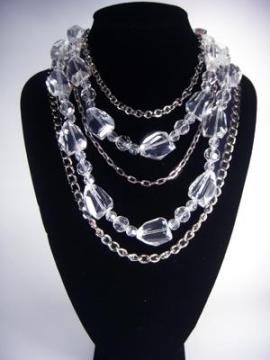Despite all of the clichéd sayings, not all wines get better with age. Consumers beware: should you choose to hold a bottle, you could be disappointed in the long run.
If the wine was made to be fruity, exuberant, and bright, there is little chance you will find it interesting when it is old. However, if you prefer a complex nose, developed flavors, and earthy notes, then aging is appropriate and you should select the type accordingly.
The variety of wine and the location of the vineyards greatly impact a wine’s ability to age well. In general, grapes with little or no tannins have difficulty aging, while a wine with high acid content and a low pH will mature nicely. But it’s not as if those details are printed on the label! So when deciding whether or not to cellar it, consider the region of origin. Grapes grown in a warm climate will age less graciously than those from cool weather regions, unless the winemaker found the optimum chemistry. Varietal, region, grower, acidity, pH, tannins, sugar, and alcohol level are all factors in a wine’s age-ability that I take into consideration at bottling time. There is also microbiology stability that comes into play, as it can be destroyed over the years.
Wines with large amounts of phenolic compounds age better because tannins and anthocyanins are protecting them by absorbing the oxygen given off during the aging process. Some red varieties, such as cabernet sauvignons, cabernet francs, petit verdots, and tannats, mature quite nicely. Pinot noirs, however, have little phenolic compounds and need to have a high acidity in order to achieve the same result.
When considering your favorite whites to cellar, look for varieties from a cool region, with no tannins, high acidity, and a low pH. Since sugar content is an important factor in aging, sweet white wines can also stand the test of time—and get better with time. Sauternes, a French desert wine, age extremely well and taste much more sophisticated as the years go by. Late harvest Rieslings, ice wines, wines from the Tojak region in Hungary, and vintage ports all adhere to the cliché and get better with time.
Should you choose to hold a bottle to enjoy at a later date, the method in which you do so is almost as important as the variety you choose. If the proper conditions in the cellar are not achieved, the wines can turn to vinegar. Consistent conditions are vital to the outcome, and temperature, humidity, and light are the three most important factors. A dark cellar kept between 50 and 60 degrees Fahrenheit is considered ideal. Humidity should be between 60 and 70 percent; less and the corks could dry out and the wine evaporates; more, and the labels could be damaged and organisms could grow between the capsule and the cork. Avoid air movement, and keep in mind that the warmer the cellar, the faster the wine will age. Store the bottles on their side or with the cork facing down to avoid any oxidation.
The cork needs to be checked regularly (every 10 years), and if the bottle is not full, then the wine has evaporated over the years and chances are you have a bad bottle.
So once you have taken these factors into consideration, when do you know it is time for tasting? While the best way to find out “how old is too old?” is to sample the wine, that’s not going to help you. So first, look at the color. When reds start to dull, or become too brick or brownish, take it as a bad sign. The tannins will start to be brittle and the aromatics are gone. The flavor will be acidy and dry; the cabernet sauvignon is gone. You lost all of the pleasure found in a great wine. Oops! Too bad.
For white wines, when they have aged too much, they become a deep yellow. The nose is oxidized and they smell like a rancio wine. The oxidization has a browning effect on the color, and the smell can become pungent. If the flavor is waxy or sherry-like, the wine is past its prime.
If you find a wine that you particularly enjoy, I recommend buying many bottles, and opening them on a regular basis over the years so that you can follow the evolution of the vintage. It’s fun way to personally connect with a specific wine. And most importantly, enjoy!
Cheers,
Genevieve Janssens
Director of Winemaking at Robert Mondavi Winery
Robert Mondavi Vintages To Keep
All of our Reserves are aging well, as they come from very strong terriors, with the vineyards producing wines of extreme quality. Our Cabernet Sauvignon Reserves are excellent candidates for cellaring. They age graciously and are still enjoyable after many years. We are still enjoying vintages from the 60s and 70s. The Chardonnay Reserve and Fume Blanc Reserves are still good after 10 to 15 years of cellaring.
Robert Mondavi Vintages To Drink
All of our Napa Valley tiers should be opened within three to four years. We crafted them to be enjoyed right away. This year, I recommend you open our 1998 vintages (which was affected by El Nino weather) and 2000 vintages (the year had average temperatures and rainfall, and produced a good yield).



















